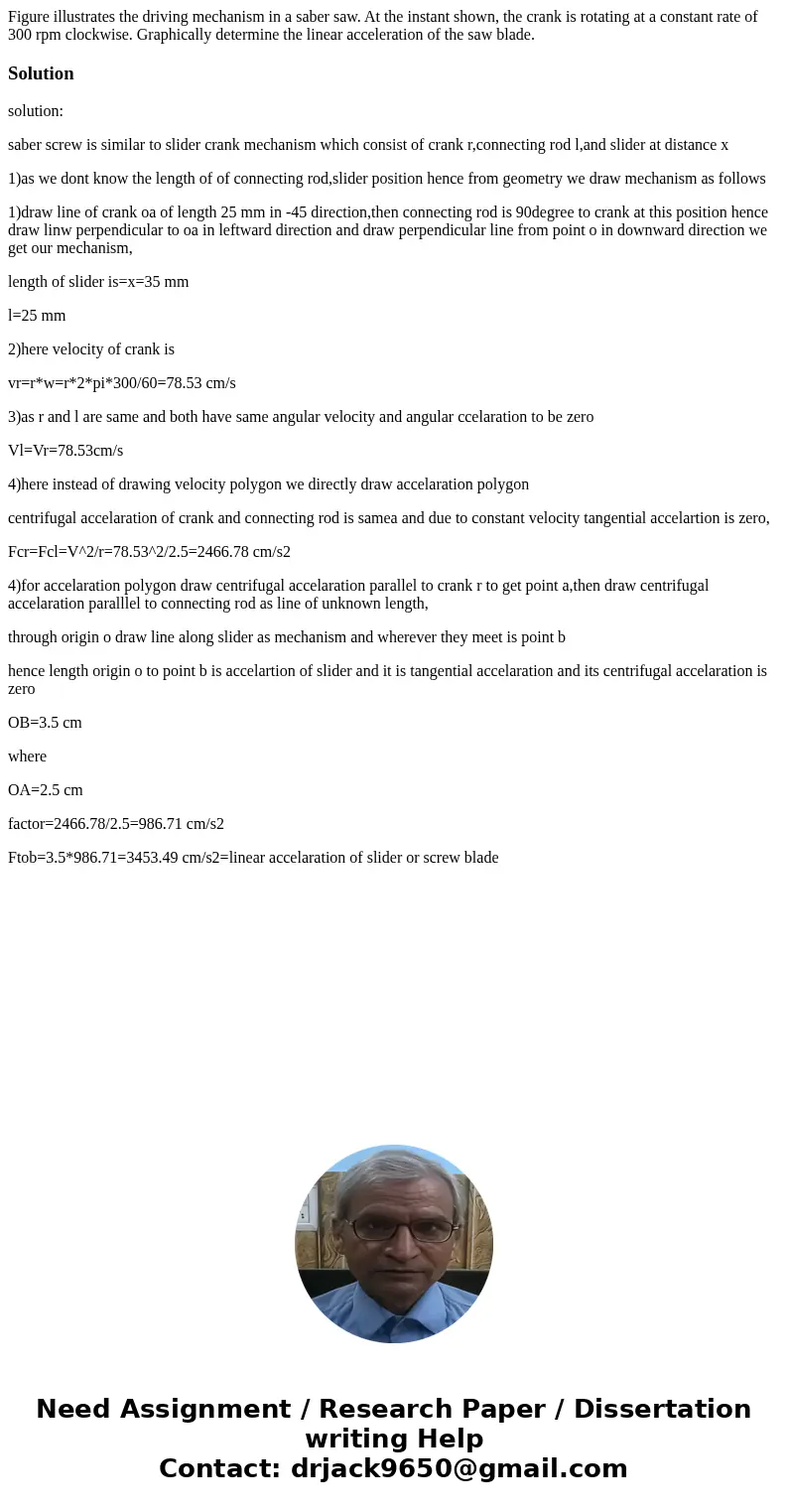Figure illustrates the driving mechanism in a saber saw At t
Solution
solution:
saber screw is similar to slider crank mechanism which consist of crank r,connecting rod l,and slider at distance x
1)as we dont know the length of of connecting rod,slider position hence from geometry we draw mechanism as follows
1)draw line of crank oa of length 25 mm in -45 direction,then connecting rod is 90degree to crank at this position hence draw linw perpendicular to oa in leftward direction and draw perpendicular line from point o in downward direction we get our mechanism,
length of slider is=x=35 mm
l=25 mm
2)here velocity of crank is
vr=r*w=r*2*pi*300/60=78.53 cm/s
3)as r and l are same and both have same angular velocity and angular ccelaration to be zero
Vl=Vr=78.53cm/s
4)here instead of drawing velocity polygon we directly draw accelaration polygon
centrifugal accelaration of crank and connecting rod is samea and due to constant velocity tangential accelartion is zero,
Fcr=Fcl=V^2/r=78.53^2/2.5=2466.78 cm/s2
4)for accelaration polygon draw centrifugal accelaration parallel to crank r to get point a,then draw centrifugal accelaration paralllel to connecting rod as line of unknown length,
through origin o draw line along slider as mechanism and wherever they meet is point b
hence length origin o to point b is accelartion of slider and it is tangential accelaration and its centrifugal accelaration is zero
OB=3.5 cm
where
OA=2.5 cm
factor=2466.78/2.5=986.71 cm/s2
Ftob=3.5*986.71=3453.49 cm/s2=linear accelaration of slider or screw blade

 Homework Sourse
Homework Sourse